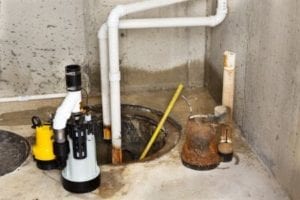We recently discussed why it’s important to have backup batteries and secondary pumps installed in the event that your primary sump pump fails. However, there’s a third option that is a viable option for many homeowners – water-powered backup sump pumps. How exactly does a pump powered by water work, and how is it different than an electric-powered system?
In general, a water-powered pump is designed so that when city water enters a constricted area and speeds up, it causes a reduction of pressure in the pump. Once the pump is depressurized, water is sucked out of the crock/basin and combines with the city water. The final step in the process involves the combined city and sump water exiting the system through a discharge line.
Obviously, water- and electric-powered pumps differ in a few ways. There are pros and cons of each type of system. For example, electric pumps can often be more efficient and cost effective in the long run. On the other hand, they can be more prone to failure – both of mechanical components and if you lose power. If you have a water-powered pump installed, however, you won’t need to worry about having any backup batteries. Your system will still work without electricity as long as you have access to city water.
If you’re in the process of deciding which type of pump is right for your property, there are a few things you should consider. Most importantly, you need to know how much water is pulled from the basin per gallon of city water. You would want to get one comparable to the primary pump to ensure it is capable of keeping up with the demand. Also, if you’re worried about your pump failing or ensuring that your pump will continue to work even during an extended power outage, a water-powered pump may be the better option since you don’t have to rely on any sort of backup power source.
Do some additional research before selecting the pump that’s best for you and your home, and don’t be afraid to ask for help if you need more information when it comes to deciding between water-powered and electric pumps.

